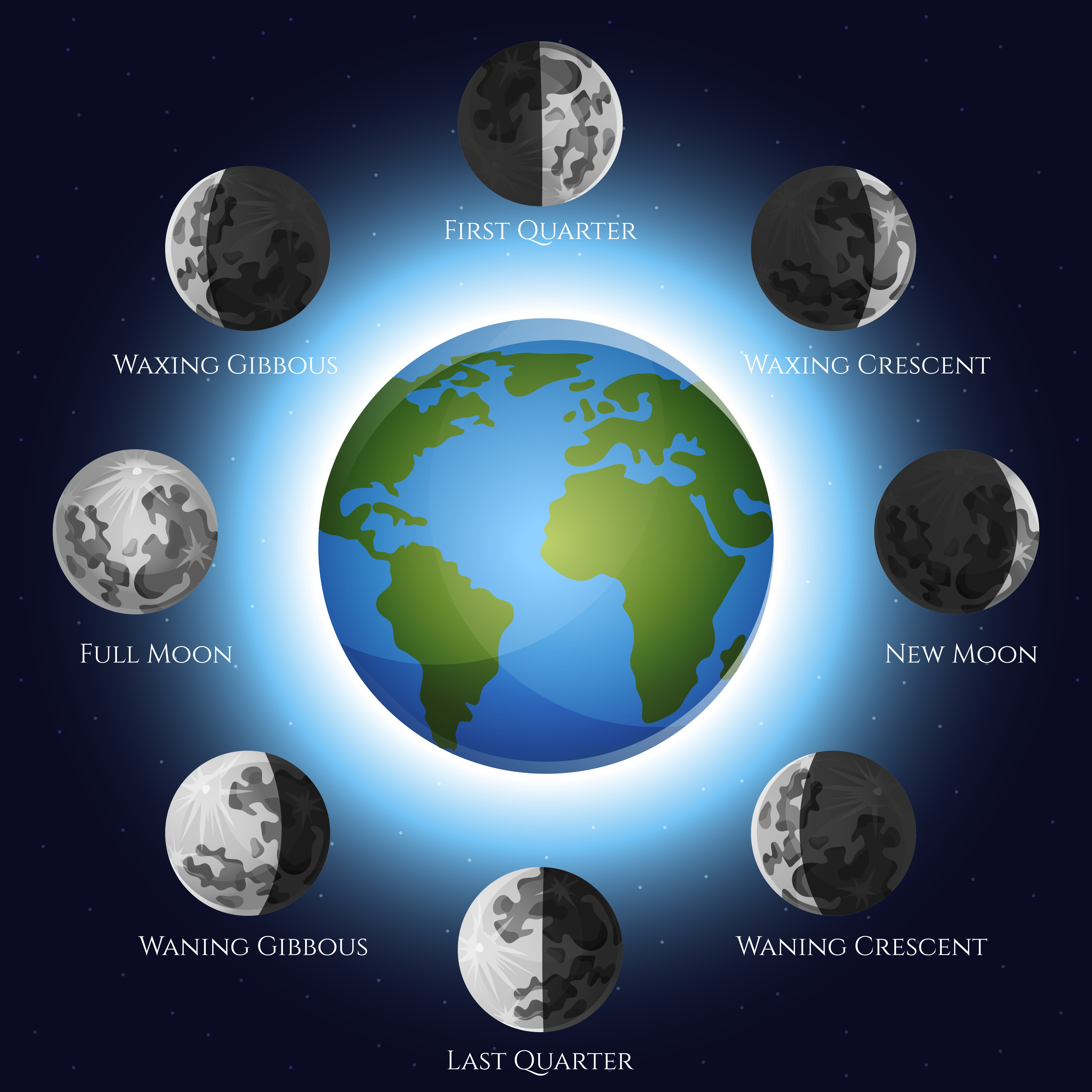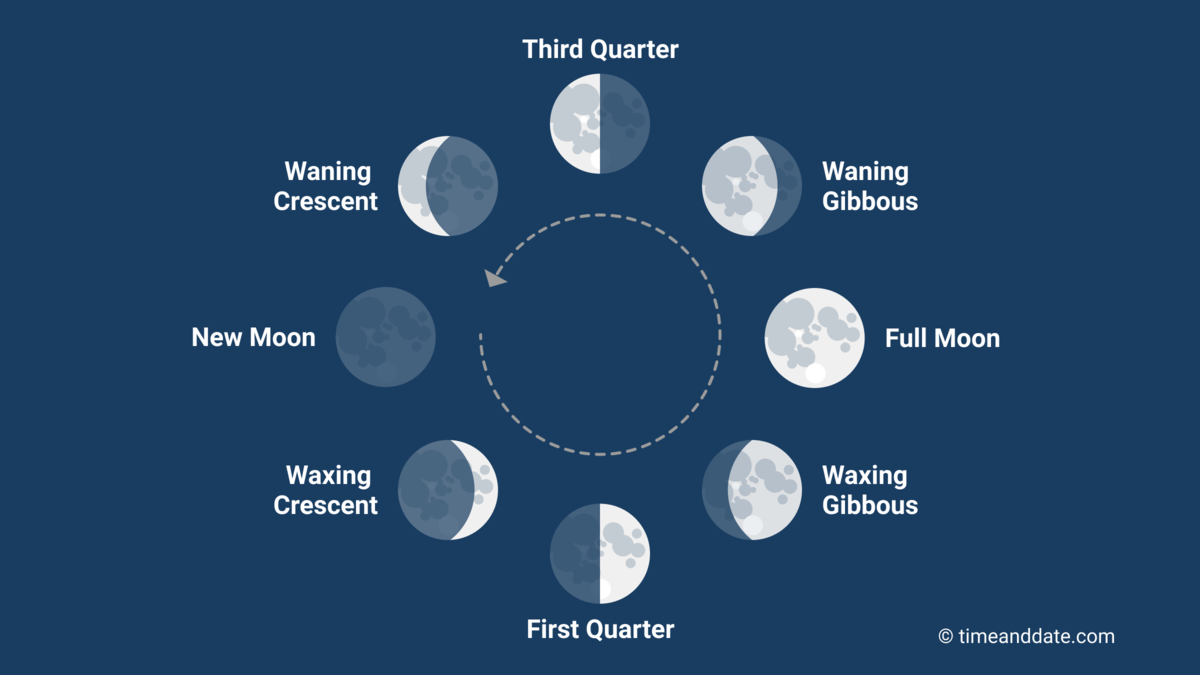
Moon phases in order full#
the Moon has revolved around the Earth one timeĪbout 21.75 days after the New Moon phase, the Moon has moved 270 degrees around its orbital path.Īfter the Full Moon phase, the Moon continues to move in its orbit, which results in the Moon moving toward the Sun.the Earth has rotated on its axis 29 times.
 the Sun remains in the same place and the Earth-Moon system move about 1/12th of the way around their orbital path around the Sun. After the Full Moon phase, the Moon continues on its orbital From New Moon to Full Moon, the revolution of the Moon along its orbital path moves the Moon farther away from the Sun until the two celestial bodies are opposite each other. Also, the moon phases are waxing, which means the illuminated part of the Moon visible to viewers on Earth is increases as little each day. Thus, the Moon is to the east of the Sun and the the west side of the Moon is illuminated. The Full Moon is only visible from sunset to sunrise.įrom the New Moon phase to the Full Moon phase, the Moon appears to be following the Sun across the southern sky. The Full Moon is not visible during the daytime. The Full Moon sets as the Sun is rising. The Full Moon is at its Zenith at midnight. The Full Moon rises when the Sun is setting. Thus, the Moon is opposite the Sun in the sky resulting in the side of the Moon facing Earth to be fully illuminated. The First Quarter Moon phase is visible in both the daytime and nighttime sky.Ībout 14.5 days after the New Moon phase, the Moon has moved 180 degrees from the Sun. In the Northern Hemisphere, the right side of the First Quarter Moon phase is illuminated. The First Quarter Moon sets at midnight. The First Quarter Moon is at its zenith when the Sun sets.
the Sun remains in the same place and the Earth-Moon system move about 1/12th of the way around their orbital path around the Sun. After the Full Moon phase, the Moon continues on its orbital From New Moon to Full Moon, the revolution of the Moon along its orbital path moves the Moon farther away from the Sun until the two celestial bodies are opposite each other. Also, the moon phases are waxing, which means the illuminated part of the Moon visible to viewers on Earth is increases as little each day. Thus, the Moon is to the east of the Sun and the the west side of the Moon is illuminated. The Full Moon is only visible from sunset to sunrise.įrom the New Moon phase to the Full Moon phase, the Moon appears to be following the Sun across the southern sky. The Full Moon is not visible during the daytime. The Full Moon sets as the Sun is rising. The Full Moon is at its Zenith at midnight. The Full Moon rises when the Sun is setting. Thus, the Moon is opposite the Sun in the sky resulting in the side of the Moon facing Earth to be fully illuminated. The First Quarter Moon phase is visible in both the daytime and nighttime sky.Ībout 14.5 days after the New Moon phase, the Moon has moved 180 degrees from the Sun. In the Northern Hemisphere, the right side of the First Quarter Moon phase is illuminated. The First Quarter Moon sets at midnight. The First Quarter Moon is at its zenith when the Sun sets. 

The illuminated side of the Moon faces the Sun. Both the Sun and Moon move across the sky, with the Moon following at about 90 degrees behind the Sun. About 7.5 days after the New Moon Phase, when the Sun is at its zenith (highest point, which is noon), the First Quarter Moon phase rises above the eastern horizon. The time for one complete revolution is called the Lunar Cycle, which takes about 29-30 days.







 0 kommentar(er)
0 kommentar(er)
